George Greenaway Elementary 24-25
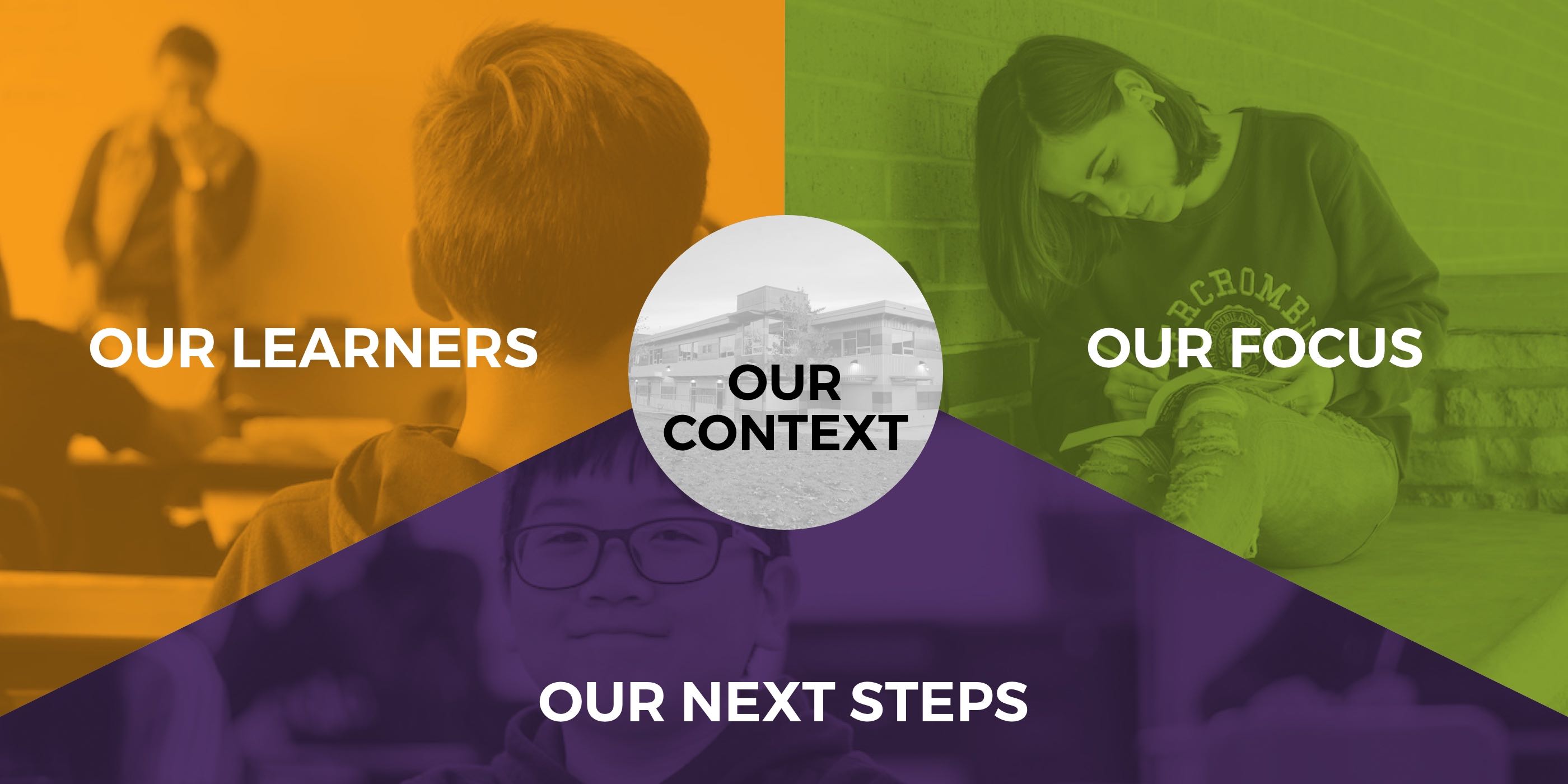

OUR CONTEXT
We respectfully acknowledge that we work, learn and play on the unceded, shared territories of the Coast Salish peoples. We honour the q̓íc̓əy̓ (Katzie), Semyome (Semiahmoo) and Kwantlen First Nations who have been the stewards of this land since time immemorial. We highlight this history knowing that relationships and partnerships based on respect with the Indigenous peoples of this land are important for truth and reconciliation.
George Greenaway Elementary where "Everyone's Best Builds Success". Our mission is to create a community school where students feel connected to each other, our staff and the greater school community. George Greenaway Elementary welcomes and supports all learners with a goal to help every child reach excellence in citizenship and academic achievement. We strive to support our students to develop a ‘growth mindset’ to promote effort and persistence in learning. We want all our students to continue to build problem-solving skills and strategies in knowing how to productively handle conflicts. Diversity and inclusion are central to the learning and growth at George Greenaway. With a large, growing and increasingly diverse school community of close to 600 students, we continually work towards creating an environment that embraces the diversity of our students and a deeper understanding and appreciation of our whole school community. Throughout the year, we recognize, learn about and honour the National Day for Truth and Reconciliation, Orange Shirt Day, Black History Month, Vaisakhi, Eid, Pride Month, Indigenous Peoples Day and many more.
We offer opportunities for our students to flourish both inside and outside the classroom. In partnership with the ‘Community Schools Partnership’ (CSP) department at Surrey Schools and the ‘Washington Kids Foundation’, students can participate in different programs such as ‘Jumpstart’ and ‘Game Ready’. Our focus is on empowering our students to help them feel they have opportunities to make a positive impact on their school and community. Students in our intermediate grades can participate in a variety of sports including Cross Country, Soccer, Volleyball, Basketball, Badminton, Ultimate and Track & Field. In addition, Band was offered to our Grade 7 students interested in learning to play an instrument.

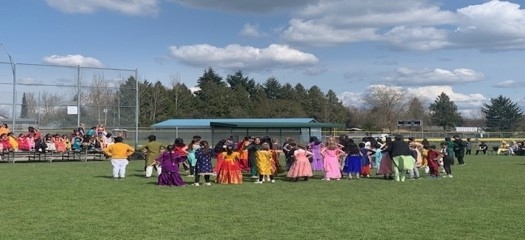
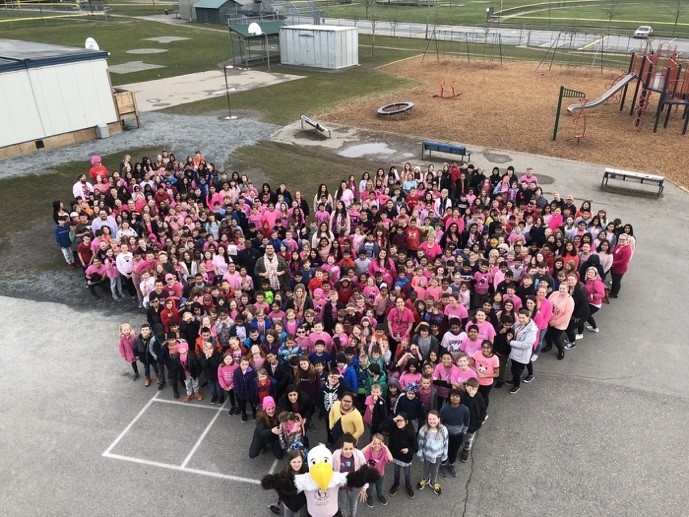
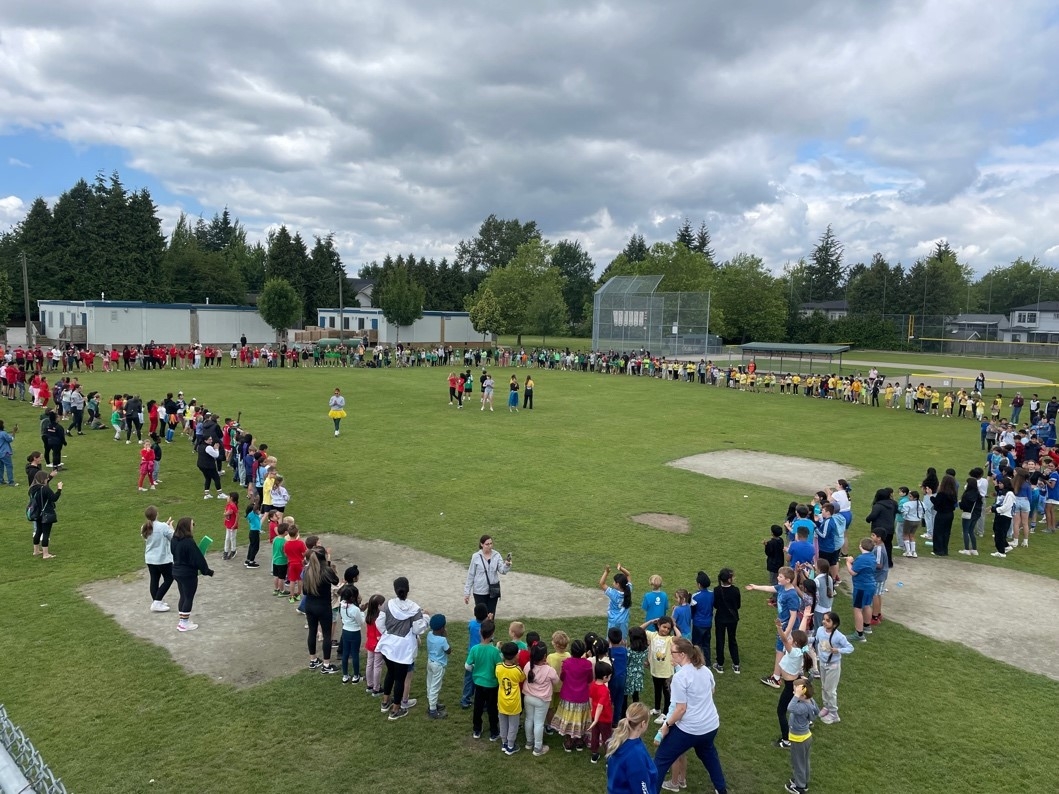
OUR LEARNERS
We are now in the second year of our school-wide reading goal, with a continued focus on building strong foundational literacy skills. Students have shown growth in areas such as phonics, decoding, and reading fluency.
Our learners are developing and using a range of strategies to support their reading, including using picture clues, reading ahead, and drawing on their background knowledge to make meaning. They are also becoming more confident in their abilities to comprehend and engage with texts.
As students strengthen their reading skills, they become more independent, which supports not only their academic achievement but also their self-worth. Confident readers are more likely to participate in classroom activities, feel successful in their learning, and build the resilience and self-assurance that supports their overall social-emotional development.
Reading fluency and comprehension are critical to academic success. Fluent readers can access content across subject areas, think critically, and meaningfully engage with text. This fluency is rooted in strong decoding skills—translating written words into sounds—which allows students to focus on understanding what they read.
Our Learners are Building Foundational Phonics Skills
Foundational phonics are essential for learning to read because it teaches students the relationship between letters and sounds. This skill allows our learners to decode words, which means they can sound out and recognize written words accurately and efficiently. Mastering phonics helps our learners read fluently and better understand what they read, forming the basis for all future reading and learning. By using a variety of reading programs and assessment strategies, we are facilitating the explicit and systematic teaching of foundational skills needed for our learners to become proficient readers.
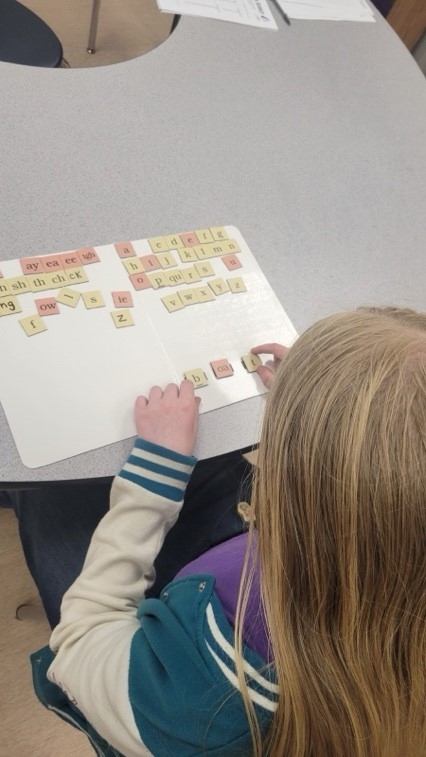
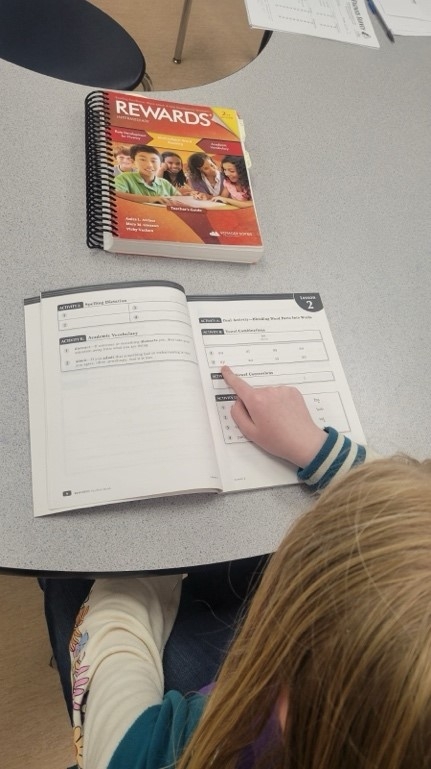
*Student engaging with a reading program
Our Learners are Developing Reading Fluency
Reading fluency, particularly in early primary, is crucial as it serves as a bridge between decoding words and understanding text. Fluent readers can read text accurately, at an appropriate pace and with expression. This skill is crucial because it enhances comprehension, aids vocabulary development, boosts motivation and fosters independence, laying a strong foundation for future learning and overall academic success. Our learners who read fluently are better equipped to study on their own, conduct research and engage with various types of written materials independently.
Our Learners are Finding Joy in Books and Building their Confidence around Reading
Last year, our school launched a Book Exchange Program in partnership with leadership students from the Environmental Club at Lord Tweedsmuir Secondary, who generously donated books to support our students. This wonderful initiative helped spark a joy for books and promote community engagement.
This year, we have continued the Book Exchange independently, with our school community taking the lead. Families have donated a wide variety of books, and students continue to give and take books to enjoy at home. The program remains a valued part of our school culture, promoting reading for pleasure and increasing access to books outside of the classroom. Our goal is to complement our formal reading programs with a holistic and balanced reading approach. By allowing access to free print materials, our hope is that they will be inspired and find a passion for reading.
As students discover books they enjoy and take ownership of their reading choices, we’ve seen a noticeable increase in their enthusiasm and confidence as readers. This love for reading supports not only their literacy development but also their motivation to learn, creating a positive cycle of engagement, fluency, and growth.
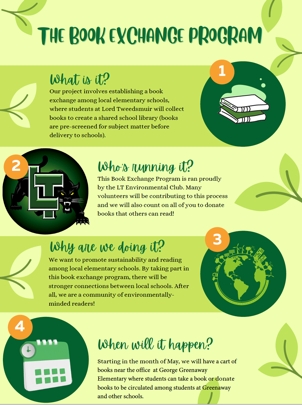
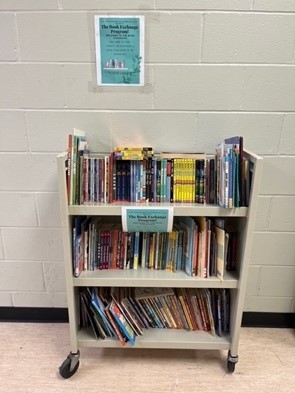
And as our learners find joy and fall in love with reading, they also have a new-found desire to share their favourite books with others and also write their own stories.
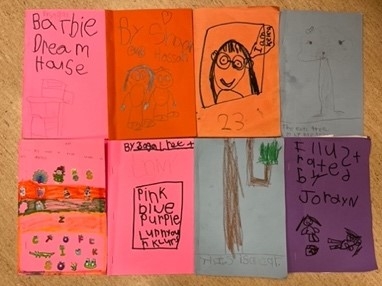 *Grade 1 students become authors and illustrators
*Grade 1 students become authors and illustrators
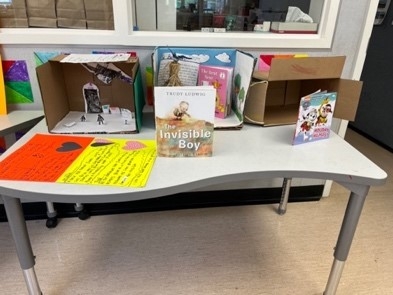 *Grade 2/3s find inspiration from their favourite books
*Grade 2/3s find inspiration from their favourite books
OUR FOCUS
Our teachers have identified literacy, specifically, reading fluency and comprehension as an area of growth for our students. Teaching fluency lays the foundation for lifelong literacy skills. It enables young learners to read with accuracy, speed and expression, enhancing comprehension and enjoyment of texts. However, before learners can become fluent readers, they must be able to decode text. Once our learners can decode text independently and with proficiency, they can focus more on understanding the text, which improves overall fluency.
The Learning Standard we are Focusing on:
Reading Strategies and Processes for
using knowledge of language patterns and phonics to decode words
identifying familiar and “sight” words
With a focus on our learners who receive targeted learning support, we implemented direct instructional strategies tailored for early primary students to address reading fluency concerns. Our Learning Support Teachers have been focusing on increasing our learners’ capacity for decoding multisyllabic words, explicitly teaching vowel teams to help our early leaners grasp the relationship between letters and sounds and collaborating with classroom teachers to create objectives and proficiency markers for reading that are being used universally with our Grade 1 & 2 students. In addition, we specifically used our District resource funds towards the purchasing of materials and resources geared towards these objectives.
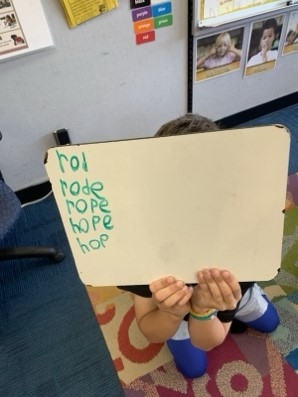 *Student practicing along with strategies/lessons in class
*Student practicing along with strategies/lessons in class
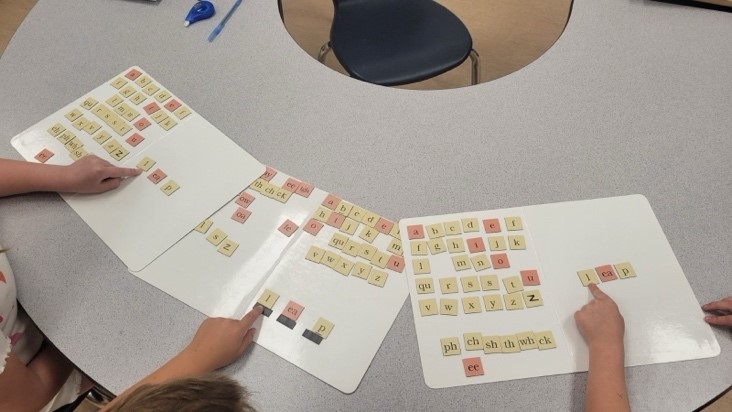
*LST students practicing “word work” focusing on vowel teams
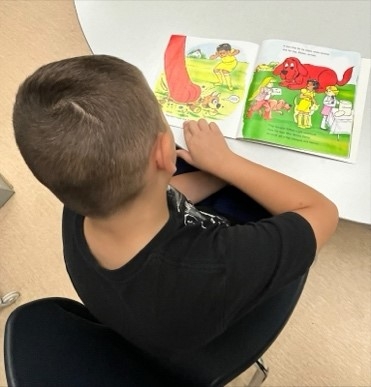
*Grade 2 student who showed great improvement over the course of the year; reading independently, with confidence
Our learners are using their prior knowledge and self-monitoring to decode words, such as “sight” and “heart” words, as they read. When students can decode words effectively, they become more confident readers, which leads to improved reading skills overall.
OUR NEXT STEPS
It is demonstrated, through evidence gathered from our cohort of students and reflected in the larger group of early primary students, that our reading focus is positively impacting learners.
Language from the provincial scales was used to identify success and remaining challenges. There was a noted improvement for all the students identified in the sample cohort in relation to the reading goals. These goals included:
Reading Strategies and Processes for
using knowledge of language patterns and phonics to decode words
identifying familiar and “sight” words
To support our learners in developing reading fluency, a variety of pre and post assessments and programming have been implemented for our early learners. Early identification and intervention for struggling readers was and continues to be essential. This year, students receiving Learning Support Team (LST) services participated in a structured, systematic phonics program. Each student was assessed in October and again in May, with students grouped by level to receive targeted instruction.
Phonics Instruction Growth (2024/25)
Students in Grades 1 and 2 who received structured phonics instruction demonstrated significant growth between October and May. The chart below highlights their progress in two foundational phonics areas, CVC words and consonant clusters, comparing their performance from October (fall baseline) to May (spring reassessment).
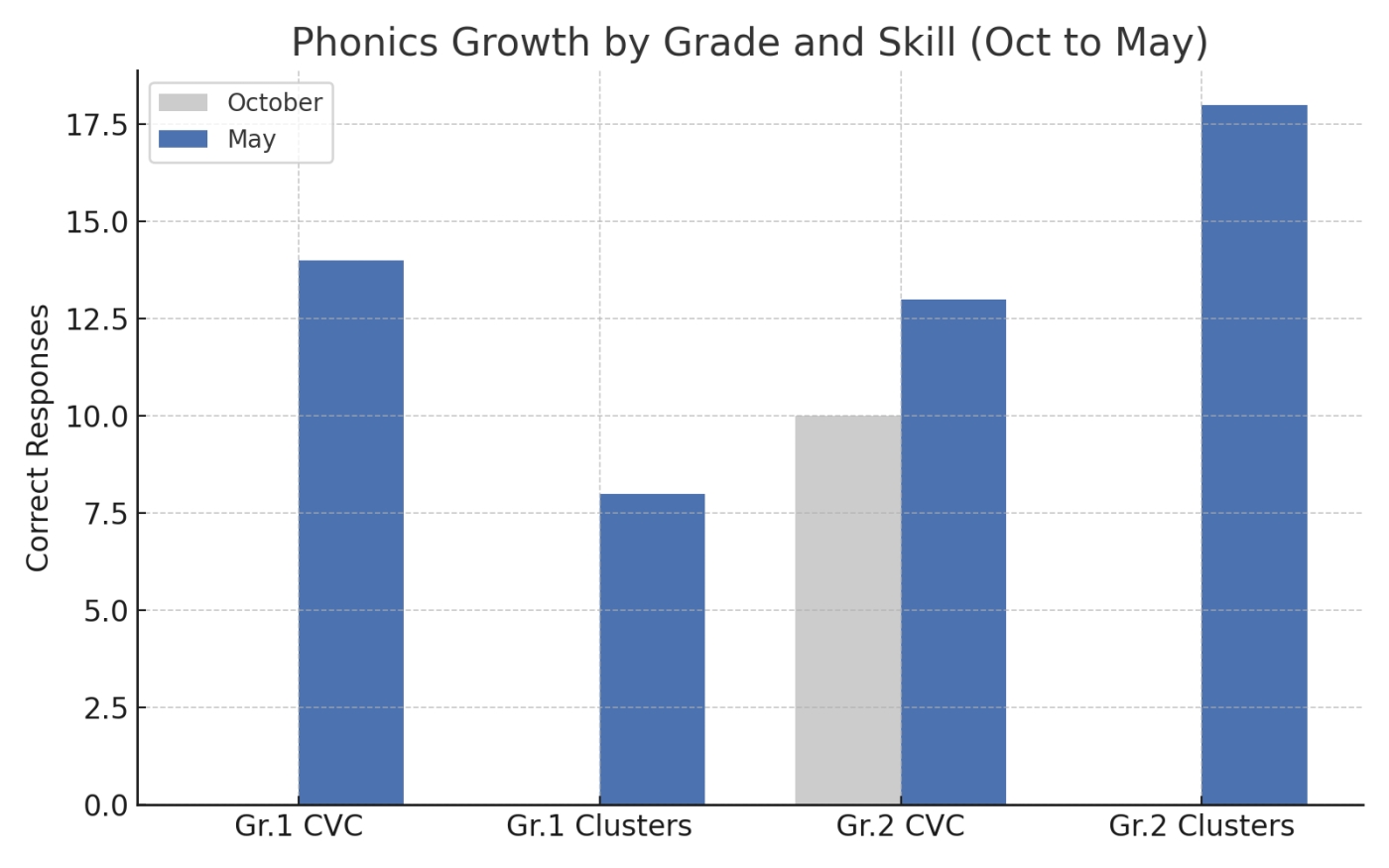
As part of our structured phonics instruction in LST, a group of Grade 4 students were assessed in the fall (October) and again in the spring (May). The chart below shows average growth in several key reading skills that are important for developing fluent and confident readers.
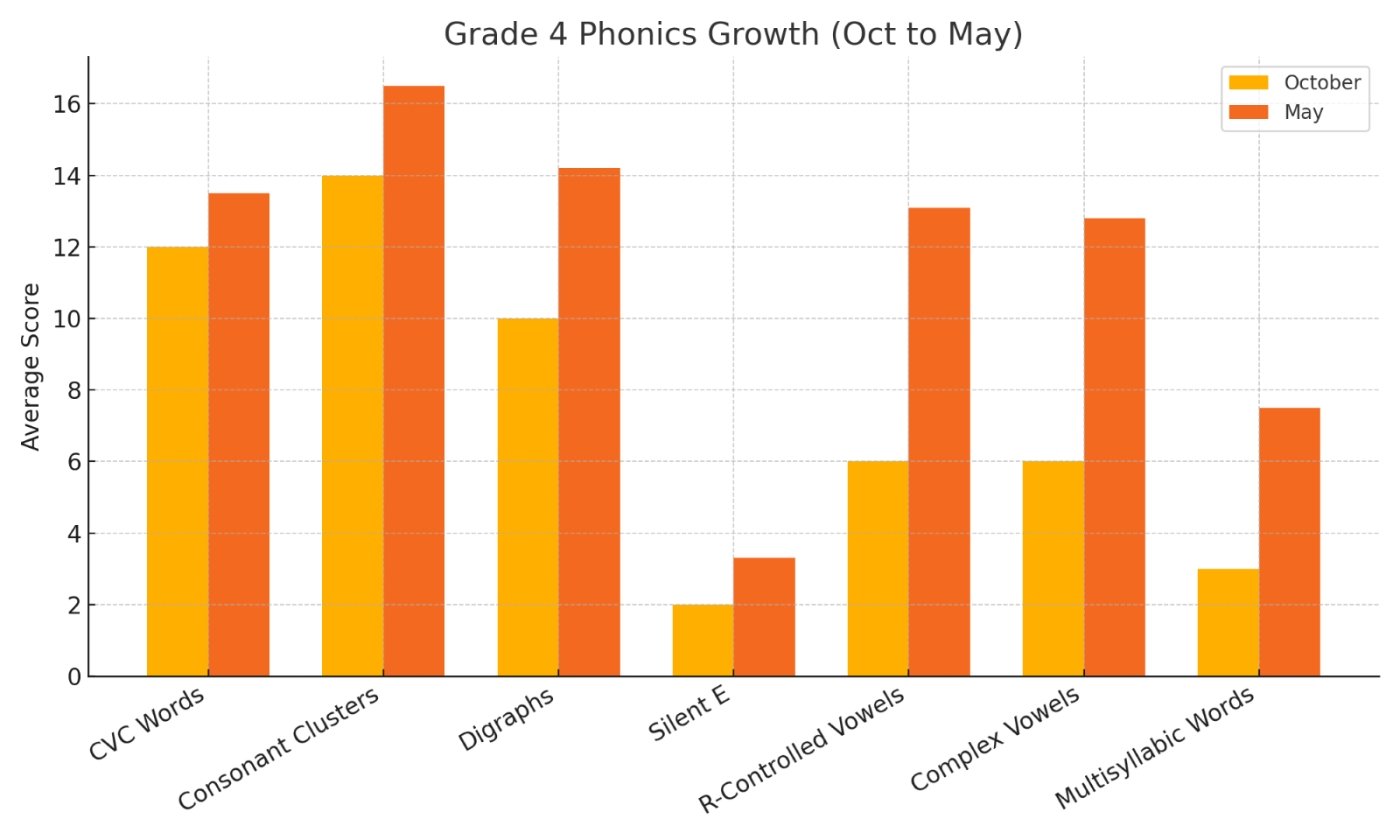
Multi-Year Retention of Phonics Skills (2024-2025)
To assess long-term impact, individual students were tracked across two school years. The graph below shows consistent retention and continued growth, particularly in consonant cluster decoding.
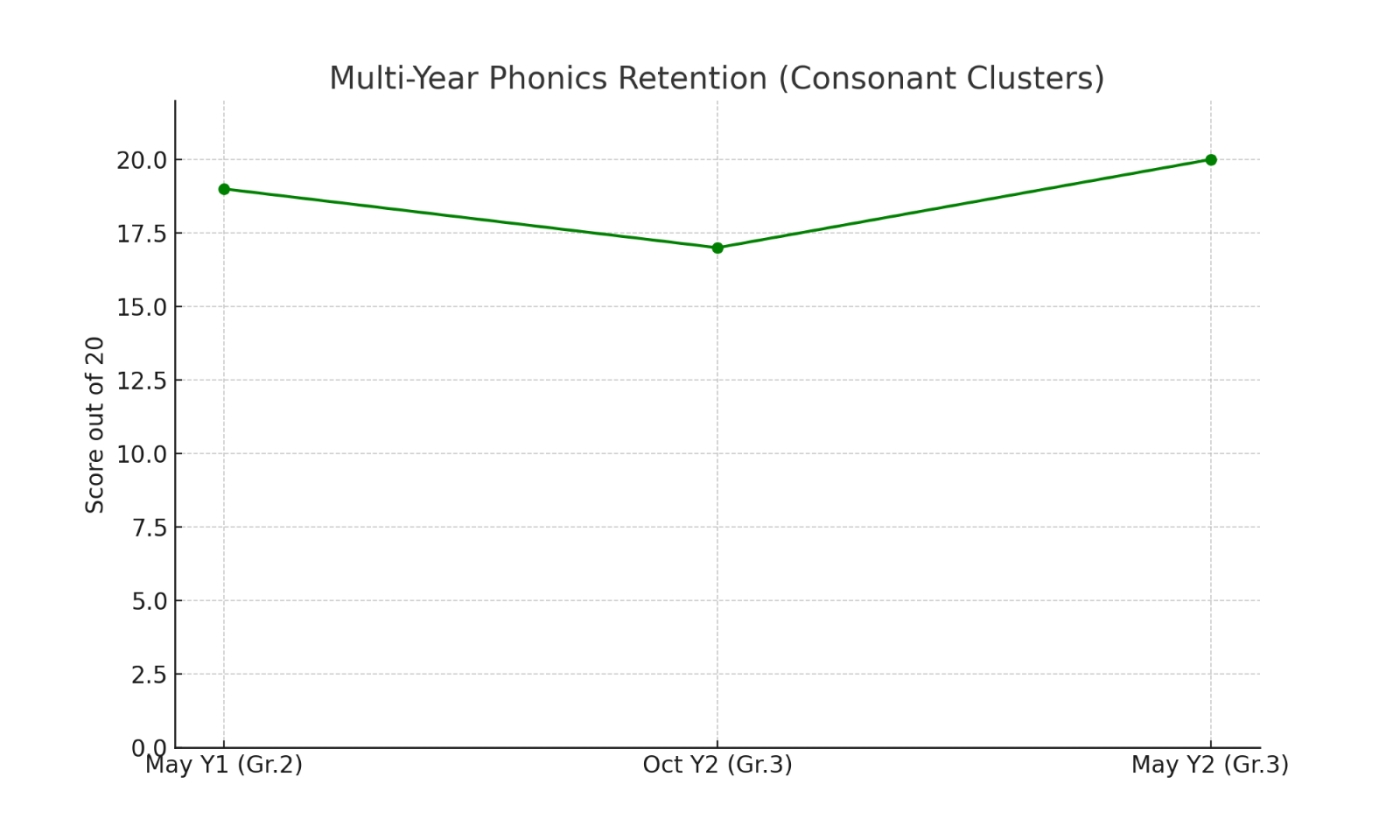
Assessment Growth - Year 1 (May 2024) to Year 2 (May 2025)
Based on assessment results at the conclusion of the period in which concepts were presented, practiced, and reviewed, 75% of students in the cohort were able to master the targeted skills. With 25% of students still requiring support, this will remain an area of ongoing focus and priority.
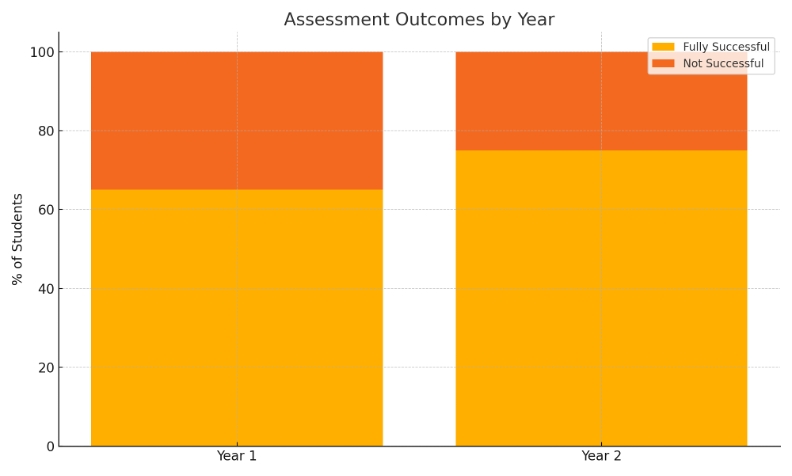
Metric | Year 1 | Year 2 |
Avg. % CVC Correct | 45% | 78% |
Avg. Clusters (out of 20) | 11/20 | 16/20 |
Fully Successful (%) | 65% | 75% |
Results improved overall from Year 1 to Year 2. A larger percentage of Grade 1 students met expectations. Data across the two years of implementation indicate improvements in decoding and early literacy success.
Analysis:
As noted above in the graphs and charts, the students progressed in reading. In “Reading Strategies and Processes for Using Knowledge of Language Patterns and Phonics to Decode Words” and “Identifying Familiar and ‘Sight’ Words”, there was a 75% increase in the number of students identified as “proficient” in alignment with the provincial assessment language and guidelines.
Assessment results show that throughout the year, students made steady and meaningful progress. Data shows marked growth in foundational reading skills, especially decoding and fluency.
We saw growth across all areas of phonics—especially in their ability to:
Blend sounds to read simple words (CVC words)
Recognize letter patterns that create new sounds, such as digraphs (like sh and ch) and consonant clusters (like st and bl)
Read more complex word patterns such as vowel teams (ea, ai) and r-controlled vowels (ar, er)
Decode longer words, including multisyllabic words, which can be especially challenging
By the spring, students had not only gained skills—they were applying what they learned with greater confidence. Many students were able to tackle more complex texts and use new strategies to figure out unfamiliar words. This growth supports not only their reading fluency and comprehension but also builds motivation and self-esteem.
What’s especially encouraging is that students who received this type of instruction over two years showed strong retention of their learning, even after the summer break. These students picked up right where they left off in the fall and continued to grow throughout the year. This shows us that strategic programming involving direct, explicit instruction is not only effective in helping students make progress, but that it also supports long-term learning.
Across the board, our young readers are becoming more confident, more capable, and more excited about reading—an essential foundation for success in all subject areas.
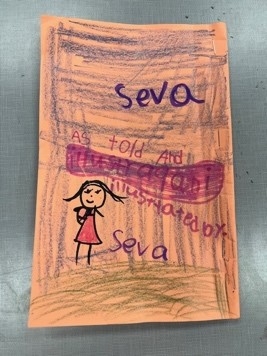
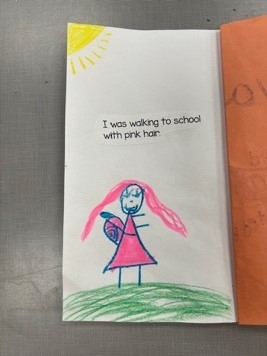
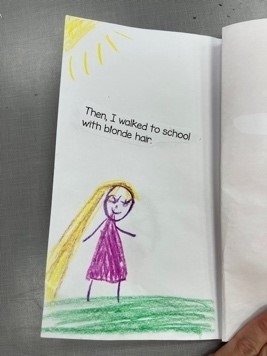
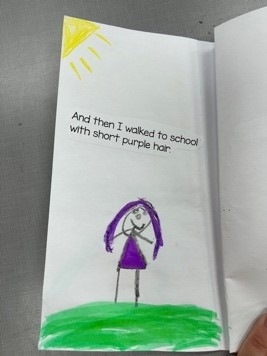
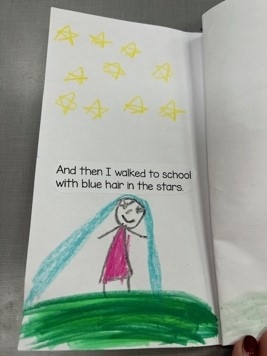
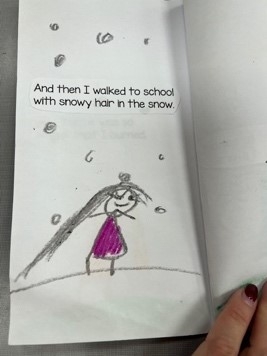
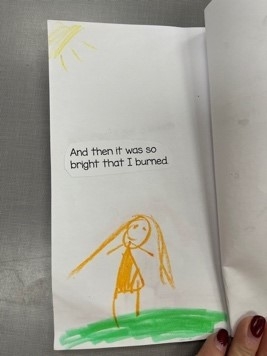
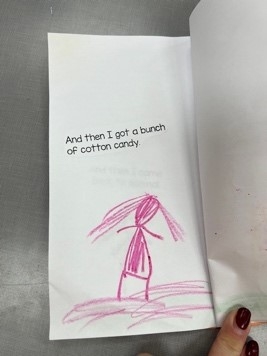
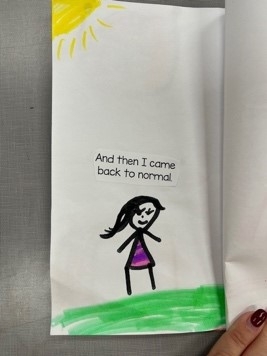
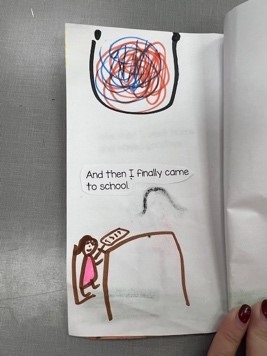

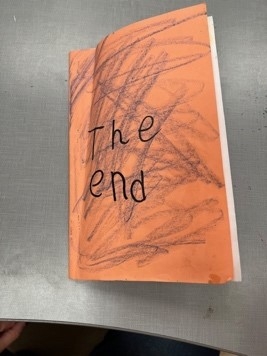
Book written and illustrated by a student from the cohort who made great gains throughout the year in reading fluency; sparking confidence and joy for her as a reader, leading her to become an inspired author and illustrator.
Insights and Reflections from our Students:
Question: Please share a little bit about your learning journey in growing as a reader this year, and how you feel about yourself as a reader now.
Grade 2 Student A:
"Well, I worked on reading in LST this year. I do enjoy LST because I learned how to read. I enjoy it because now I learned so much stuff and now I am getting smarter. And when I get smarter it is so much funner and I liked reading. It is actually kinda fun. I can sound out the words and I feel sooo confident as a reader now. Learning to sound out the words makes it easier to read and I like reading now."
Grade 4 Student B:
"This year in LST we have been working on letter group and affixes, and vowel sounds. At the beginning of the year, I was not confident in my reading abilities. In class I would ignore any kind of reading and not do my work. After learning reading in LST, I am more confident as a reader. In class I actually read all the instructions my teacher gives me and I try to complete my work."
Continuing the Journey:
At George Greenaway Elementary, we are proud of the progress our learners have made in a short time. Based on evidence of students’ progress in relation to our learning goals, our next steps will include:
- Implementing intentional and dedicated time in classrooms to read with easy access to engaging print material to create a holistic and balanced reading approach.
- Continuing to build fluency through the intentional use of instructional strategies to allow opportunities for students to further build their fluency skills.
- Comprehensive school wide implementation of reading strategies (grade appropriate) to increase student fluency across all grade levels.
- Continuation of re-organizing of our library commons based on student friendly subject and theme headings for ease of access.
- For the 2025-2026 school year, we will expand our cohort, and data will be gathered from both primary and intermediate grade levels to gain a school-wide perspective on fluency and comprehension of students across all grades.
- At George Greenaway, we are dedicated to ensuring that all students acquire the literacy skills and proficiencies essential for success in school and beyond. As we continually monitor, reflect and refine our learning plan, we will also prioritize the equitable distribution of instruction, time and resources focusing on supporting and reaching our most vulnerable learners.
